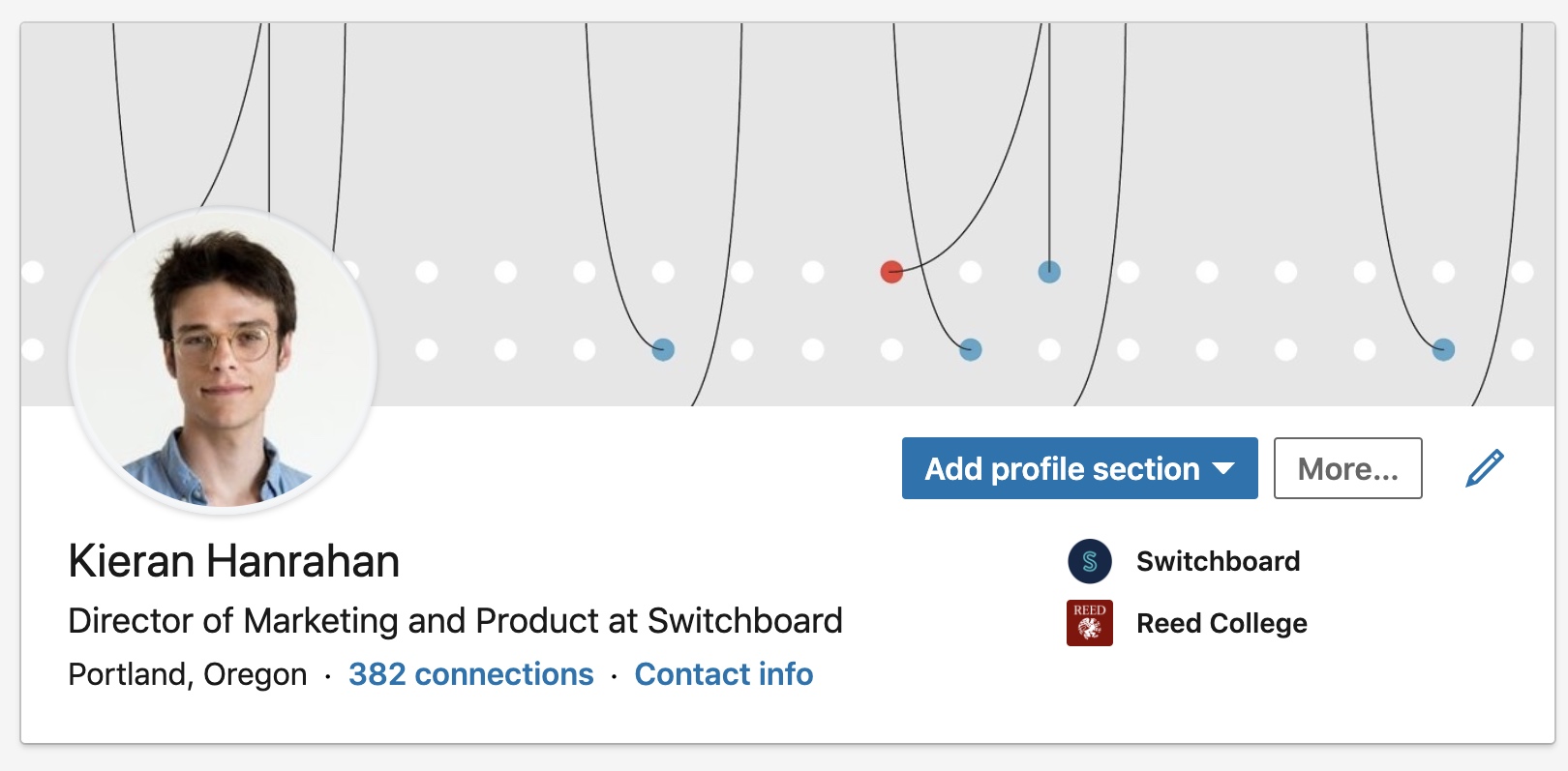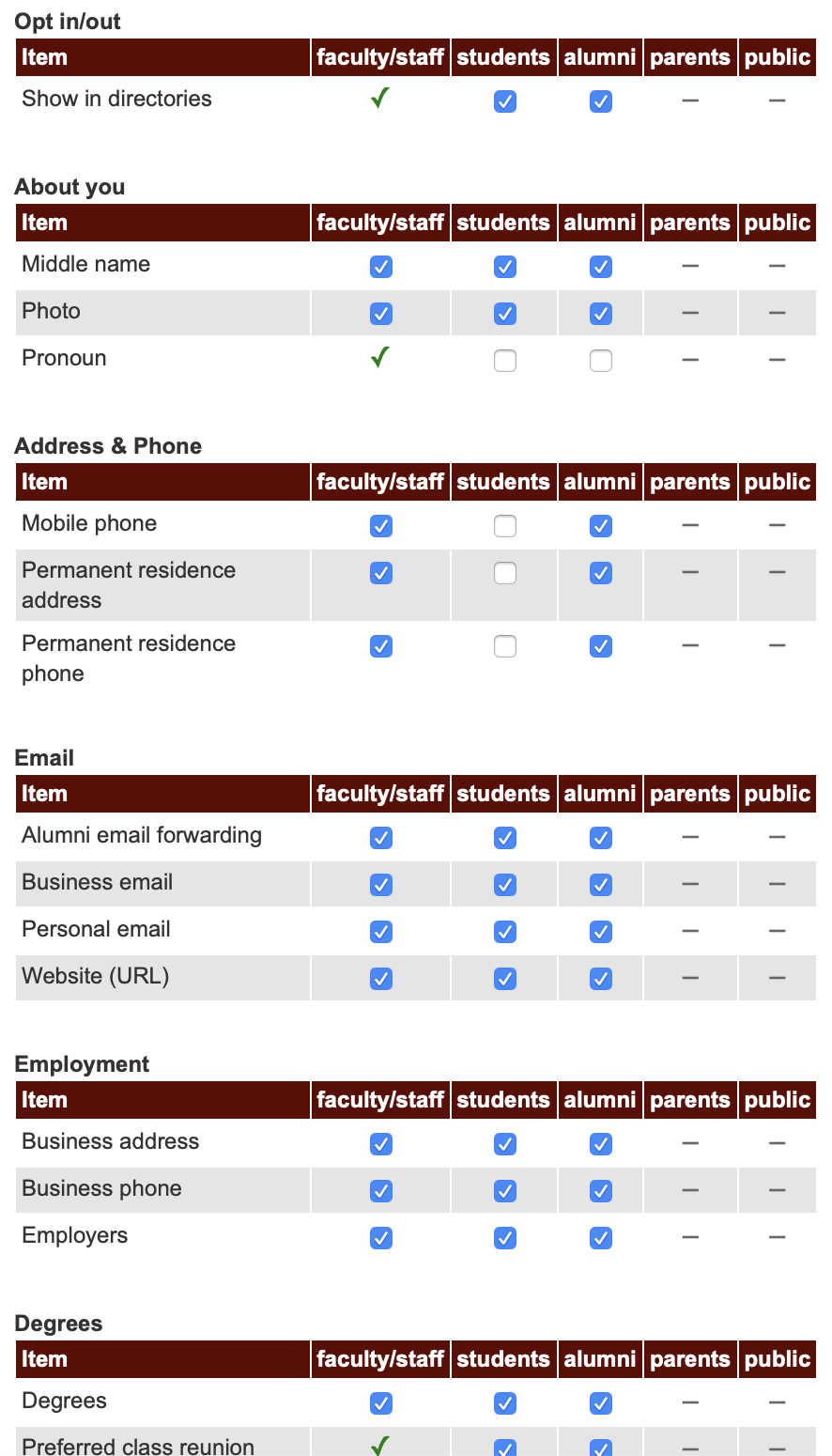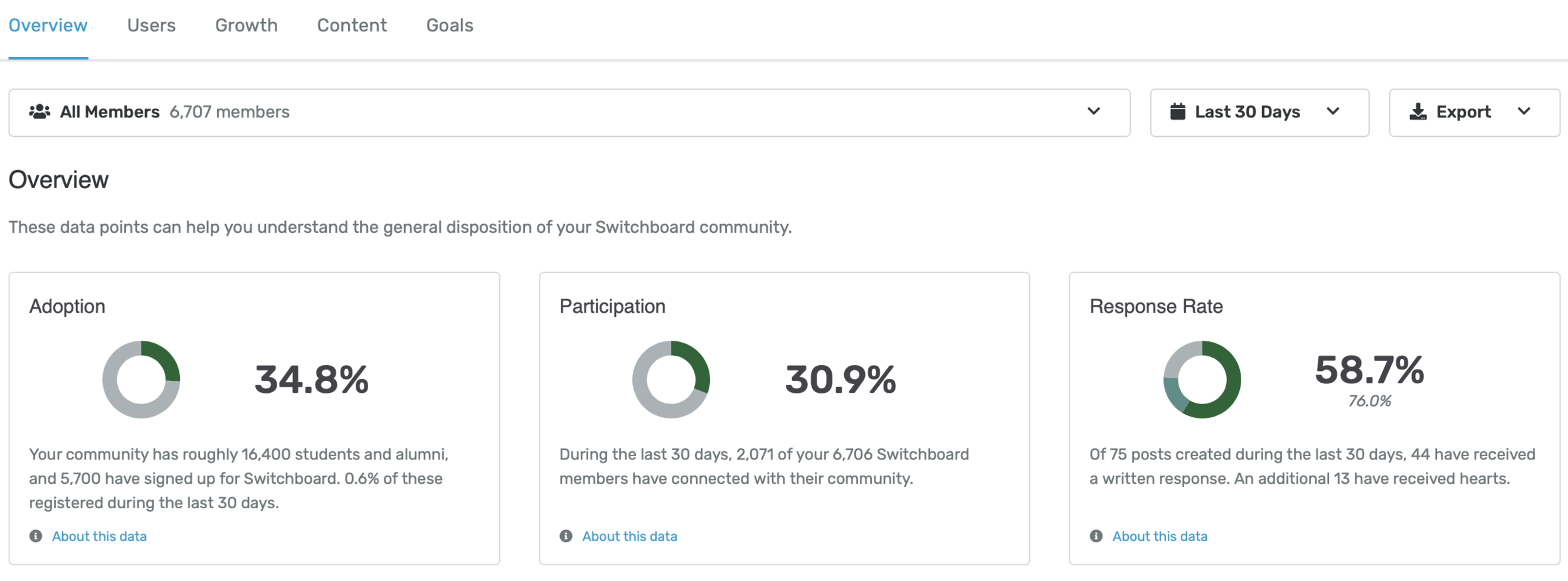Directories are inherently static things that make for poor community platforms and an overall negative user experience.
We get a lot of questions about what makes a good alumni community platform.
Many of the institutions we talk to have already tried one only for it to fail or sputter after a lengthy and expensive implementation process.
Not only have these institutions spent thousands of dollars and hundreds of hours of work on something that failed, they’ve also damaged their relationship with alumni who signed up for the platform because the alumni wasted their time, too. It’s bad all around.
One thing these failed platforms share in common is their approach to designing an alumni community: They center the user experience on a directory.
It might not be clear right away why that’s a bad thing. After all, if you ask colleges and universities what they want in an alumni platform, an alumni directory is probably the first or second feature they think of. But in the seven years Switchboard has been in the business of designing and improving our own alumni community platform, we’ve learned a lot about what makes one work and what doesn’t.
So in this post, I’ll provide a detailed explanation of why an alumni community platform set up around an alumni directory is a platform set up to fail.
What is a directory?
Let’s start by defining our terms.
A directory is a searchable collection of entries, each of which contains information about a person. The simplest form of a directory might be a phonebook. Digital directories can contain much more information and be more easily searchable than a physical phonebook, but they’re essentially the same thing.
Directories are databases of information about people.
The phonebook survives in online form!
Why are directories bad?
Directories aren’t inherently bad. They’re good for finding people, learning more about them, and getting in touch with them. They’re also great for those of us on the back-end who need to keep track of a bunch of people and their contact information.
Looks a lot like the Whitepages entry, right?
LinkedIn is an example of a platform that is, fundamentally, a directory. LinkedIn makes it easy for you—or recruiters and companies that are hiring—to find people based on their work history, skills, and so on. It’s also good for finding the companies that are doing the hiring!
But it’s not so great at other things.
You may, like me, belong to several LinkedIn groups that are dead as a doornail. You’ve probably also noticed that your LinkedIn newsfeed is only ever full of barely relevant content from the same two or three people in your network. (And we don’t even know how many active users LinkedIn actually has anymore because Microsoft stopped reporting the statistic after it acquired LinkedIn in 2016.) LinkedIn is great for career networking—for serving as a directory that helps you connect with people—but everything else is just lopped on to that core functionality.
Alumni directories are useful in the same circumstances LinkedIn is. I’ve used my alma mater’s own alumni directory several times to connect with alumni at particular companies or in certain fields, and having their contact information readily available has been helpful.
The problems with alumni directories and the platforms built around them arise when we expect them to do more than serve as a phonebook—and when we expect a phonebook to meet the entirety of our alumni’s needs.
If you were to calculate the amount of time I’ve spent using my alumni directory since I graduated four years ago, it would probably amount to less than an hour. Now, I, as the directory user, don’t mind that at all! But if you as an institution are looking for a way to deepen your relationships with your alumni and engage them over the long term, an hour every four years obviously won’t do it. And there are a number of things I’ve needed from my alma mater’s network over that same period of time that the alumni directory has not been able to give me. The directory can only meet a small fraction of my needs as an alumnus.
Directories can’t meet most needs
Directories enable some connections, typically more formal ones. To connect with someone using a directory, you have to call or email a stranger with whom you only share your alma mater in common. At most, that stranger may have checked a box on their profile that indicates “It’s okay to contact me for advice!”
Believe it or not, most current students and young alumni don’t feel comfortable reaching out to other people this way. Even though they both attended the same institution, and even though the alumna in the directory might be perfectly willing to talk, the act of contacting a stranger whose profile is just sitting in a directory is an intimidating barrier to entry. To digital natives, this sort of contact is tantamount to walking up to a stranger on a busy street and tapping them on the shoulder to ask for help—it’s nerve wracking, and we don’t want to be a burden to others. This barrier means that only the most enterprising among students and young alumni will use a directory to contact someone in the first place.
It also means that students and alumni reserve the use of a directory only for formal requests—informational interviews, job-seeking, etc.. Those requests are only a small fraction of the needs of the members of our community. As humans, we have a multitude of needs that our alma maters’ networks can help us meet.
Here is a summary of some of the needs we’ve seen students and alumni express on our own alumni platform:
Alumni and students need help...
Finding a place to live in a new city
Figuring out how to live abroad
Editing their resume
Applying for grants
Learning a specific skill for work
Finding a resource for their organization
Doing chores, yardwork, moving, etc. (older alumni especially)
Learning how to drive (yes, we’ve had a number of students find someone to teach them how to drive through Switchboard)
Hiring for short-term or contract work
Finding short-term or contract work
Finding house-sitters, baby-sitters, pet-sitters
Etc.
You might think your institution doesn’t have a role to play in meeting some of these needs, but you would be wrong! I guarantee you that your students and alumni are already turning to informal networks they’ve created among themselves to ask for and offer help with these problems—and you’re missing out on that. Every time a student or alumni needs something is an opportunity for their alma mater to not just be relevant but to actively participate in making them successful. And every success you help them attain builds loyalty to the institution and capacity to give.
Your institution might not have the obligation to help students get their driver’s license, but it can help make it happen with minimal work on your part simply by giving students and alumni a place to connect with each other. That is, a place other than a directory.
Profile-driven vs. content-driven
Directories are profile-driven. The basic building block of a directory is a profile, the entry in the phonebook. Remember LinkedIn—LinkedIn’s primary function is to serve as a repository of profiles containing personal information and work histories so that hirers and job-seekers can connect. You fill out a profile, and then only have occasion to use the platform at very specific times under specific conditions (i.e. needing a job or needing to hire for a job).
What we want for sustained alumni engagement and a thriving alumni community are platforms that are content-driven. Think Instagram. (It’s not the perfect example for this case, but it’s an illustrative one.) Instagram has profiles, but the primary way you use the app is by posting photos and interacting with other photos people have posted. That’s what makes content-driven apps and platforms so great—they’re all about active interpersonal connection and interaction. They are rich and new every time you use them, and you actually experience some social connection when you do so. They give you a variety of reasons to keep coming back and using them week to week.
Boxes to check on my own alumni directory.
When someone wants to offer help on a directory, they check a box. When they need help on a directory, they perform a search. The directory doesn’t appear any more active or welcoming to other users, because these actions occur behind the scenes.
When someone wants to offer help on a content-driven platform, they post something about their offer. When they need help on a content-driven platform, they post something about their request. The community is then filled with these offers and requests for help, and it is more vibrant for it because these exchanges actively occur out in the open where people can see them.
On profile-driven platforms, you sit and wait. On content-driven platforms, you participate.
Imagine if instead of walking up to strangers on the street to ask for help, you walked into a building where everyone greeted you with a smile, a handshake, and an explicit offer to help. That’s the difference between a profile-driven directory and a content-driven alumni community platform. A directory is full of people who filled out a profile once upon a time, only to have their profiles sit and gather dust. A content-driven community is full of active participants who actively ask for and offer help to one another with a variety of needs.
An active offer to help from one of our own content-driven alumni communities for Reed College.
How do I identify whether a platform is content-first or profile-first?
I’ve simplified my examples—it can be difficult to tell whether a platform is content-first or profile-first in the wild. Instagram has a directory functionality where you can fill out a profile and search for other people based on what they’ve put on theirs. LinkedIn has group, publishing, and newsfeed features that resemble aspects of a content-driven community.
Obviously, some directory-based platforms will have dead giveaways. Did you spend 10 minutes filling out your profile when you signed up? Were there lots of boxes to check, but nothing to help you interact with the community once you finished signing up? Then the platform is probably profile-driven.
Ultimately, we have to discern not just how the platform looks to us, but how people use it in practice. That’s easy to do with a platform like Instagram or LinkedIn, but difficult to do with enterprise platforms whose instances might not be publicly accessible.
To figure it out for yourself, you’ll want to make sure you see multiple instances of the platform in action. What does it look like a couple months after it’s been implemented? A year? A few years?
You’ll also want to ask some specific questions:
What percentage of users who sign up are active in a month, on average? (This number is low for directories and higher for content-based community platforms.)
What percentage of users have signed in more than once? (Again, low for directories and high for content-based platforms.)
What percentage of users have messaged another user?
What percentage of users have made a post of some kind?
What percentage of posts receive attention from another user?
This is what our analytics dashboard looks like. If a platform makes it hard to tell how many users are active or what they’re doing, that’s a red flag.
And so on. You want to figure out whether the platform facilitates ongoing, regular engagement as opposed to one-time engagement. Profiles don’t generate that kind of engagement. Content does.
Are you evaluating an alumni platform? Need some advice or help? Switchboard offers its own alumni platform, but we also help institutions make the right decision about which technology is right for them as part of our consulting offerings—whether our technology is the right fit or someone else’s is. Learn more.










